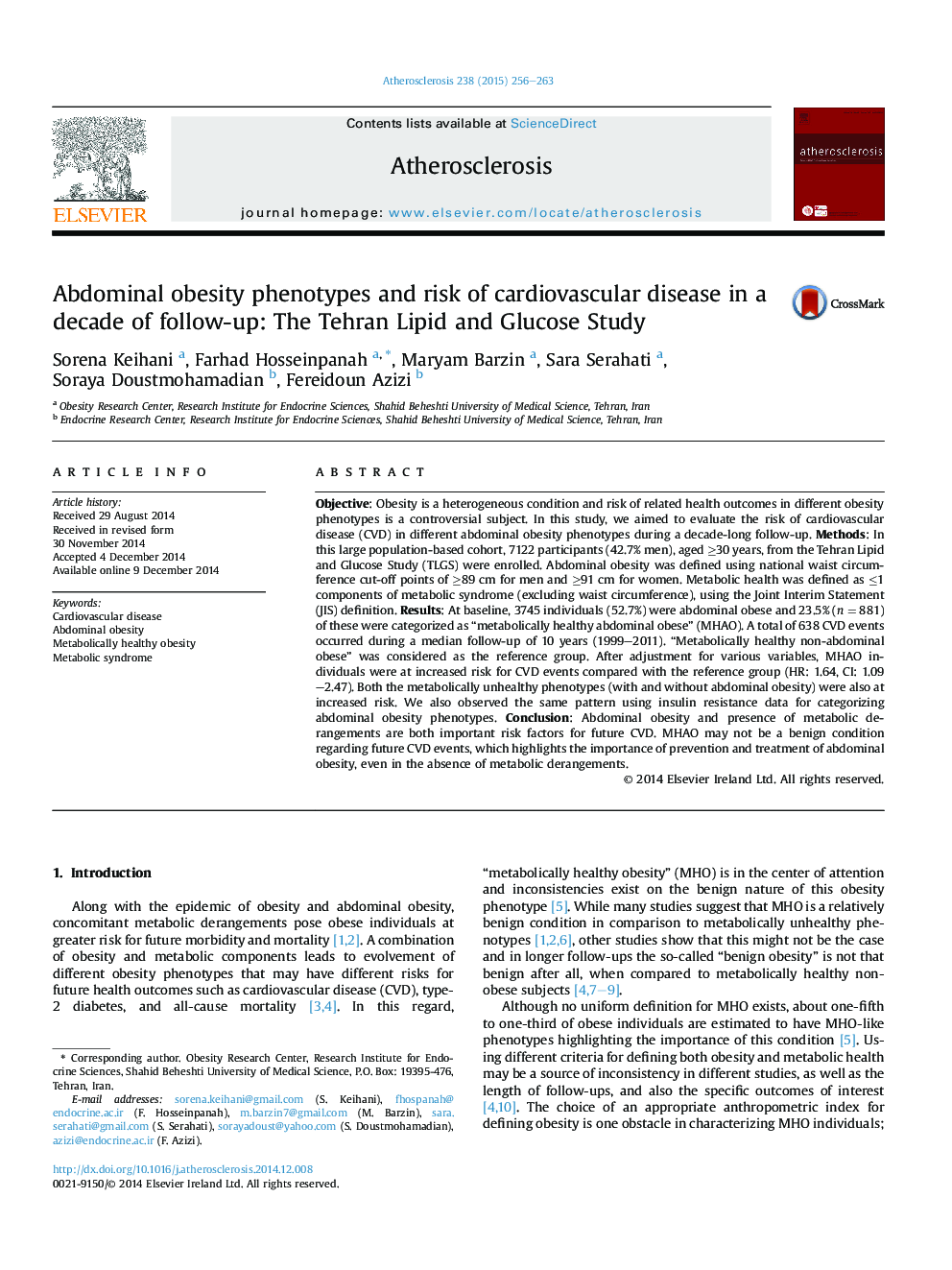| کد مقاله | کد نشریه | سال انتشار | مقاله انگلیسی | نسخه تمام متن |
|---|---|---|---|---|
| 5945512 | 1172351 | 2015 | 8 صفحه PDF | دانلود رایگان |
- Different obesity phenotypes have different risks for cardiovascular disease (CVD).
- “Metabolically healthy abdominal obese” (MHAO) phenotype is prevalent.
- MHAO is at increased risk of CVD in a 10-year follow-up in our study.
- Both metabolic health and abdominal obesity are important risk factors for CVD.
Objective: Obesity is a heterogeneous condition and risk of related health outcomes in different obesity phenotypes is a controversial subject. In this study, we aimed to evaluate the risk of cardiovascular disease (CVD) in different abdominal obesity phenotypes during a decade-long follow-up. Methods: In this large population-based cohort, 7122 participants (42.7% men), aged â¥30 years, from the Tehran Lipid and Glucose Study (TLGS) were enrolled. Abdominal obesity was defined using national waist circumference cut-off points of â¥89 cm for men and â¥91 cm for women. Metabolic health was defined as â¤1 components of metabolic syndrome (excluding waist circumference), using the Joint Interim Statement (JIS) definition. Results: At baseline, 3745 individuals (52.7%) were abdominal obese and 23.5% (n = 881) of these were categorized as “metabolically healthy abdominal obese” (MHAO). A total of 638 CVD events occurred during a median follow-up of 10 years (1999-2011). “Metabolically healthy non-abdominal obese” was considered as the reference group. After adjustment for various variables, MHAO individuals were at increased risk for CVD events compared with the reference group (HR: 1.64, CI: 1.09-2.47). Both the metabolically unhealthy phenotypes (with and without abdominal obesity) were also at increased risk. We also observed the same pattern using insulin resistance data for categorizing abdominal obesity phenotypes. Conclusion: Abdominal obesity and presence of metabolic derangements are both important risk factors for future CVD. MHAO may not be a benign condition regarding future CVD events, which highlights the importance of prevention and treatment of abdominal obesity, even in the absence of metabolic derangements.
Journal: Atherosclerosis - Volume 238, Issue 2, February 2015, Pages 256-263
